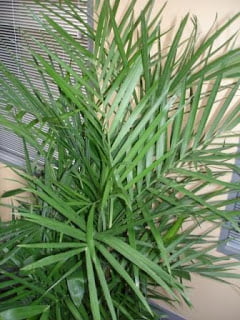- Nitrogen – Lack of growth or limited growth with chlorosis (yellowing) or loss of leaves in severe cases. Purplish coloration due to accumulation of anthocyanin pigments. Entire plant affected, older leaves most.
- Phosphorus – Dark green, stunted plants. Accumulation of anthocyanin pigments. Delayed maturity. Entire plant affected, older leaves most.
- Potassium – Mottled chlorosis, necrosis (spots of dead tissue, especially at tips and margins, between veins). Older leaves most affected. Weak stalks, roots more susceptible to disease.
- Sulfur – Chlorosis of young leaves, usually no necrosis. Veins remain green, tissue between light green.
- Magnesium – Mottled or chlorotic leaves, may redden. Leaf tips turned upward. Older leaves most affected.
- Calcium – Inhibition of root development and death of shoot and root tips. Young leaves most affected.
- Iron – Intervienal chlorosis of young leaves, stems short and slender. Buds remain alive.
- Chlorine – Wilted leaves, chlorosis, necrosis. Stunted, thickened roots or club-shaped roots near tips.
- Manganese – Chlorosis of youg leaves, necrosis between veins; smallest veins remain green. Disorganization of lamellar membrane.
- Boron – Death of stem and root apical meristems. Leaves twisted, pale at bases. Swollen, discolored root tips. Young tissues most affected.
- Zinc – Reduction in leaf size and length of internodes. Distorted leaf margins. Chlorosis. Older leaves most affected.
- Copper – Young leaves dark green, twisted, wilted, misshapen; tip remains alive.
- Molybdenum – Chlorosis or twisting and death of young leaves.
PLantscape Designs Inc uses liquid green fertilizer for all our indoor plant design and installation accounts in the Burlington, MA interiorscapes.

